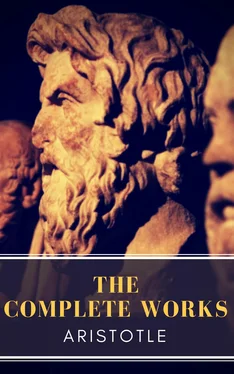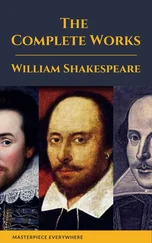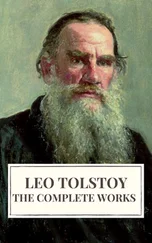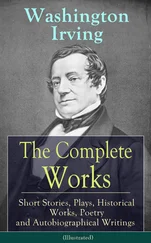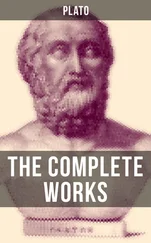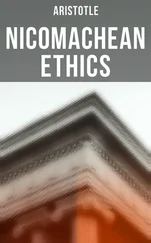Aristotle Aristotle - Aristotle - The Complete Works
Здесь есть возможность читать онлайн «Aristotle Aristotle - Aristotle - The Complete Works» — ознакомительный отрывок электронной книги совершенно бесплатно, а после прочтения отрывка купить полную версию. В некоторых случаях можно слушать аудио, скачать через торрент в формате fb2 и присутствует краткое содержание. Жанр: unrecognised, на английском языке. Описание произведения, (предисловие) а так же отзывы посетителей доступны на портале библиотеки ЛибКат.
- Название:Aristotle: The Complete Works
- Автор:
- Жанр:
- Год:неизвестен
- ISBN:нет данных
- Рейтинг книги:3 / 5. Голосов: 1
-
Избранное:Добавить в избранное
- Отзывы:
-
Ваша оценка:
- 60
- 1
- 2
- 3
- 4
- 5
Aristotle: The Complete Works: краткое содержание, описание и аннотация
Предлагаем к чтению аннотацию, описание, краткое содержание или предисловие (зависит от того, что написал сам автор книги «Aristotle: The Complete Works»). Если вы не нашли необходимую информацию о книге — напишите в комментариях, мы постараемся отыскать её.
This edition has been professionally formatted and contains several tables of contents. The first table of contents (at the very beginning of the ebook) lists the titles of all novels included in this volume. By clicking on one of those titles you will be redirected to the beginning of that work, where you'll find a new TOC that lists all the chapters and sub-chapters of that specific work.
Aristotle: The Complete Works — читать онлайн ознакомительный отрывок
Ниже представлен текст книги, разбитый по страницам. Система сохранения места последней прочитанной страницы, позволяет с удобством читать онлайн бесплатно книгу «Aristotle: The Complete Works», без необходимости каждый раз заново искать на чём Вы остановились. Поставьте закладку, и сможете в любой момент перейти на страницу, на которой закончили чтение.
Интервал:
Закладка:
Zeno’s arguments about motion, which cause so much disquietude to those who try to solve the problems that they present, are four in number. The first asserts the non-existence of motion on the ground that that which is in locomotion must arrive at the half-way stage before it arrives at the goal. This we have discussed above.
The second is the so-called ‘Achilles’, and it amounts to this, that in a race the quickest runner can never overtake the slowest, since the pursuer must first reach the point whence the pursued started, so that the slower must always hold a lead. This argument is the same in principle as that which depends on bisection, though it differs from it in that the spaces with which we successively have to deal are not divided into halves. The result of the argument is that the slower is not overtaken: but it proceeds along the same lines as the bisection-argument (for in both a division of the space in a certain way leads to the result that the goal is not reached, though the ‘Achilles’ goes further in that it affirms that even the quickest runner in legendary tradition must fail in his pursuit of the slowest), so that the solution must be the same. And the axiom that that which holds a lead is never overtaken is false: it is not overtaken, it is true, while it holds a lead: but it is overtaken nevertheless if it is granted that it traverses the finite distance prescribed. These then are two of his arguments.
The third is that already given above, to the effect that the flying arrow is at rest, which result follows from the assumption that time is composed of moments: if this assumption is not granted, the conclusion will not follow.
The fourth argument is that concerning the two rows of bodies, each row being composed of an equal number of bodies of equal size, passing each other on a race-course as they proceed with equal velocity in opposite directions, the one row originally occupying the space between the goal and the middle point of the course and the other that between the middle point and the starting-post. This, he thinks, involves the conclusion that half a given time is equal to double that time. The fallacy of the reasoning lies in the assumption that a body occupies an equal time in passing with equal velocity a body that is in motion and a body of equal size that is at rest; which is false. For instance (so runs the argument), let A, A… be the stationary bodies of equal size, B, B… the bodies, equal in number and in size to A, A… ,originally occupying the half of the course from the starting-post to the middle of the A’s, and G, G… those originally occupying the other half from the goal to the middle of the A’s, equal in number, size, and velocity to B, B… .Then three consequences follow:
First, as the B’s and the G’s pass one another, the first B reaches the last G at the same moment as the first G reaches the last B. Secondly at this moment the first G has passed all the A’s, whereas the first B has passed only half the A’s, and has consequently occupied only half the time occupied by the first G, since each of the two occupies an equal time in passing each A. Thirdly, at the same moment all the B’s have passed all the G’s: for the first G and the first B will simultaneously reach the opposite ends of the course, since (so says Zeno) the time occupied by the first G in passing each of the B’s is equal to that occupied by it in passing each of the A’s, because an equal time is occupied by both the first B and the first G in passing all the A’s. This is the argument, but it presupposed the aforesaid fallacious assumption.
Nor in reference to contradictory change shall we find anything unanswerable in the argument that if a thing is changing from not-white, say, to white, and is in neither condition, then it will be neither white nor not-white: for the fact that it is not wholly in either condition will not preclude us from calling it white or not-white. We call a thing white or not-white not necessarily because it is be one or the other, but cause most of its parts or the most essential parts of it are so: not being in a certain condition is different from not being wholly in that condition. So, too, in the case of being and not-being and all other conditions which stand in a contradictory relation: while the changing thing must of necessity be in one of the two opposites, it is never wholly in either.
Again, in the case of circles and spheres and everything whose motion is confined within the space that it occupies, it is not true to say the motion can be nothing but rest, on the ground that such things in motion, themselves and their parts, will occupy the same position for a period of time, and that therefore they will be at once at rest and in motion. For in the first place the parts do not occupy the same position for any period of time: and in the second place the whole also is always changing to a different position: for if we take the orbit as described from a point A on a circumference, it will not be the same as the orbit as described from B or G or any other point on the same circumference except in an accidental sense, the sense that is to say in which a musical man is the same as a man. Thus one orbit is always changing into another, and the thing will never be at rest. And it is the same with the sphere and everything else whose motion is confined within the space that it occupies.
<
div id="section56" class="section" title="10">
10
Our next point is that that which is without parts cannot be in motion except accidentally: i.e. it can be in motion only in so far as the body or the magnitude is in motion and the partless is in motion by inclusion therein, just as that which is in a boat may be in motion in consequence of the locomotion of the boat, or a part may be in motion in virtue of the motion of the whole. (It must be remembered, however, that by ‘that which is without parts’ I mean that which is quantitatively indivisible (and that the case of the motion of a part is not exactly parallel): for parts have motions belonging essentially and severally to themselves distinct from the motion of the whole. The distinction may be seen most clearly in the case of a revolving sphere, in which the velocities of the parts near the centre and of those on the surface are different from one another and from that of the whole; this implies that there is not one motion but many). As we have said, then, that which is without parts can be in motion in the sense in which a man sitting in a boat is in motion when the boat is travelling, but it cannot be in motion of itself. For suppose that it is changing from AB to BG-either from one magnitude to another, or from one form to another, or from some state to its contradictory-and let D be the primary time in which it undergoes the change. Then in the time in which it is changing it must be either in AB or in BG or partly in one and partly in the other: for this, as we saw, is true of everything that is changing. Now it cannot be partly in each of the two: for then it would be divisible into parts. Nor again can it be in BG: for then it will have completed the change, whereas the assumption is that the change is in process. It remains, then, that in the time in which it is changing, it is in AB. That being so, it will be at rest: for, as we saw, to be in the same condition for a period of time is to be at rest. So it is not possible for that which has no parts to be in motion or to change in any way: for only one condition could have made it possible for it to have motion, viz. that time should be composed of moments, in which case at any moment it would have completed a motion or a change, so that it would never be in motion, but would always have been in motion. But this we have already shown above to be impossible: time is not composed of moments, just as a line is not composed of points, and motion is not composed of starts: for this theory simply makes motion consist of indivisibles in exactly the same way as time is made to consist of moments or a length of points.
Читать дальшеИнтервал:
Закладка:
Похожие книги на «Aristotle: The Complete Works»
Представляем Вашему вниманию похожие книги на «Aristotle: The Complete Works» списком для выбора. Мы отобрали схожую по названию и смыслу литературу в надежде предоставить читателям больше вариантов отыскать новые, интересные, ещё непрочитанные произведения.
Обсуждение, отзывы о книге «Aristotle: The Complete Works» и просто собственные мнения читателей. Оставьте ваши комментарии, напишите, что Вы думаете о произведении, его смысле или главных героях. Укажите что конкретно понравилось, а что нет, и почему Вы так считаете.
